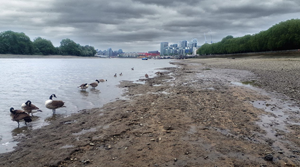No CrossRef data available.
Published online by Cambridge University Press: 28 January 2025

The River Thames, winding through the English capital of London, is the source of a substantial archaeological assemblage that includes hundreds of human bones, but the lack of a robust chronology for these finds limits interpretation. Here, 30 new radiocarbon dates are reported for the human remains. In combination with other available dates (some of which are also published here for the first time), this improved chronological framework demonstrates a predominance of Bronze and Iron Age dates and emphasises the need to explore the Thames assemblage in the broader context of watery deposition practices of later prehistoric north-west Europe.